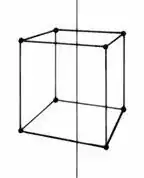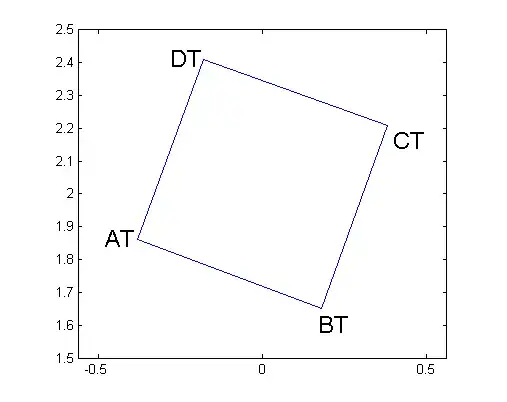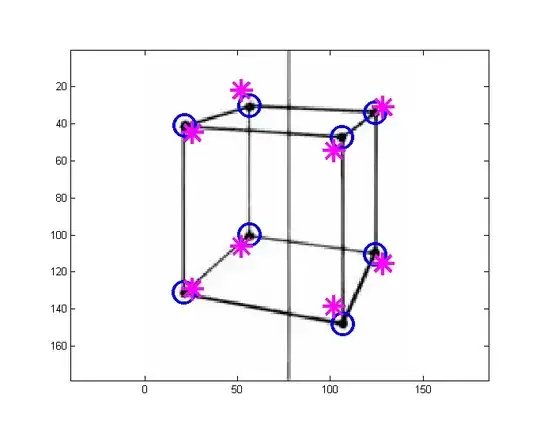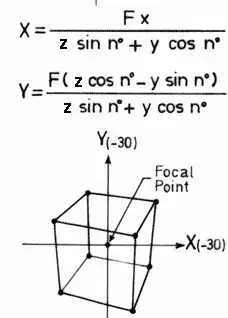I have seen so many mathematical procedures including matrix. But all don't seem to plot a perspective view. Why is it hard to establish simple vector equations by which you can input the true x,y,z coordinates of any point in the object and output X,Y coordinates of the corresponding point in perspective projection? Keep in mind that the perspective view is such as a photo taken by a camera. Hence, the location of the camera with respect to the object as well as the tilt angle of the camera (as per bird's and worm's eye views) can give different perspective views. Does anyone have any mathematical approach to execute such a process? Coordinates of the plan a(-0.38, 1.86). b(0.18, 1.65) c(0.38, 2.21). d(-0.18, 2.41) The height of the cube is (0.61) Please, show me how you get the coordinates of eight points of the perspective drawing. Thanks!




